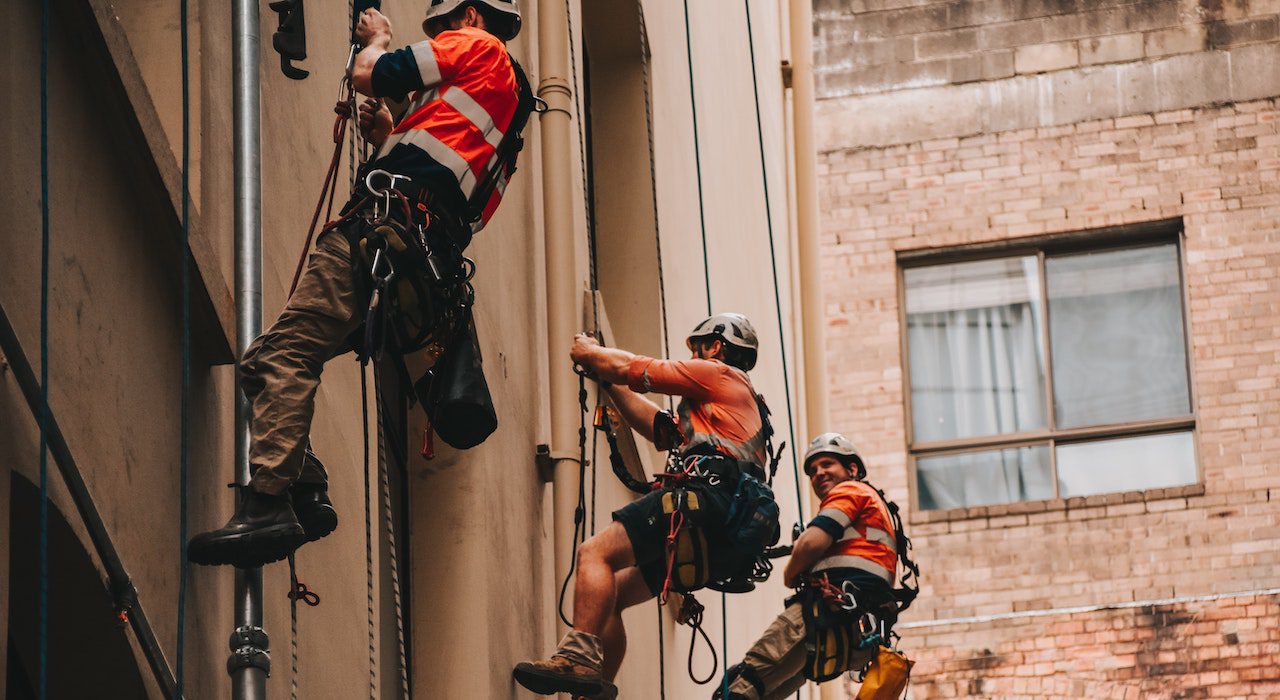Who needs fall protection equipment? If you said workers building bridges or cleaning office tower windows, you would be right.
But what about all the workers who work at lesser heights, just a few feet off the ground? They should also be protected from falls, which can be every bit as fatal.
Consider your work area. Are there locations from which some-one could fall? What sort of protection is in place to prevent a fall? And is there equipment to stop a fall?
Companies need to have a fall protection system when workers are working at a height of three meters (ten feet) or more or if there is a possibility of injury if a worker can fall at any height. Companies are mandated to have a fall protection plan in place as per section 116.1 of the Saskatchewan Occupational Health and Safety Regulations.
Fall Protection Types
There are several fall protection apparatus’ available including fall arrest personal protective equipment, travel restraints and guardrails. Fall protection equipment must be labeled with the Canadian Standards Association (CSA) or American National Standards Institute (ANSI) approval labels.
It is important to understand the difference between a fall arrest system and travel restraint system. These are most commonly used in the construction industry, but may apply to many other situations where employees must work at heights.

Fall Arrest Systems
All workers must wear fall arrest systems when they are in the danger of falling more than three meters (10 feet) or when working above operating machinery, fluids or hazardous substances and objects. A fall arrest system consists of a full body harness and a lanyard with a shock absorber. The fall arrest equipment may be attached directly to an adequate support or connected to an anchored lifeline.
Travel Restraint / Limiting Systems
Where guardrails have not been provided, a restraint system may be used to restrict a worker’s travel distance and prevents them from getting too close to the roof edge. Travel restraint safety equipment is comprised of an anchored lifeline that attaches to the worker’s harness.
Inspections
- Thoroughly inspect all nylon webbing for frayed edges, broken fibers, burn marks, deterioration or other visible signs of damage. Stitching should be intact and not torn or loose. The harness should be somewhat “soft” and flexible and not stiff from dirt or contaminants.
- Check to see that buckles and D-rings are not distorted or damaged. Look closely at all components for stress cracks, deformity, gouging, corrosion and sharp edges. Inspect connection points where the buckle or D-ring is attached to the harness. Insure that no stitching is pulled and that the buckle or D-ring is securely attached.
- Inspect all rivets and grommets to be certain they are not deformed, and are securely fastened to the harness and cannot be pulled loose.
- If using a shock absorber type of lanyard, look for the warning tag which indicates that the lanyard has been exposed to a fall.
- Snap hooks and eyes should not be distorted or bent. Inspect them for cracks, sharp edges, gouges or corrosion. Check to be sure the locking mechanism is operating properly and that there is no binding of the mechanism.
- Test the locking mechanism by pulling sharply on the cable end to be sure it locks immediately and firmly.
If you find any of these conditions during the inspection, do not use the equipment